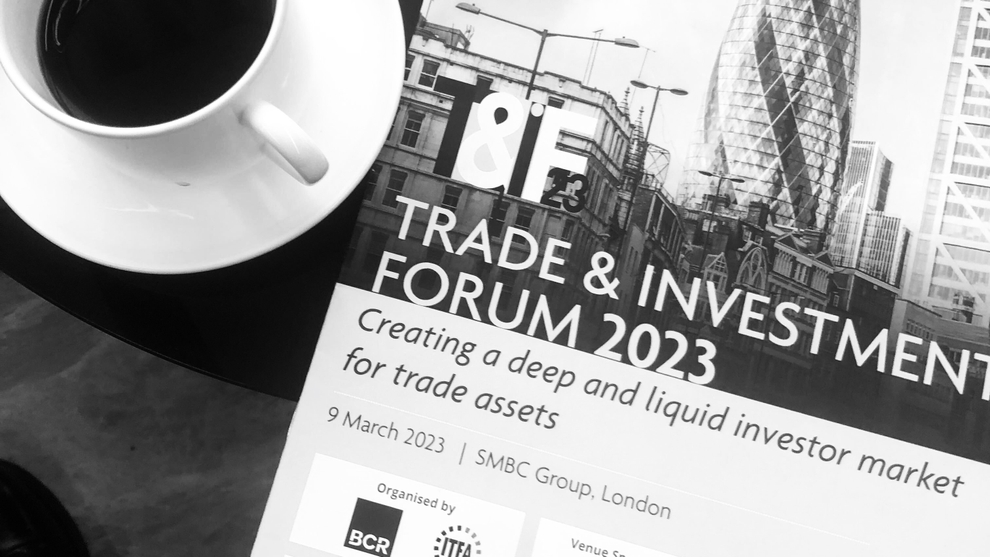Repost: Reflections on yesterday’s Trade & Investment Forum (T&IF) 2023
My thanks go to BCR Publishing and ITFA for their first Trade & Investment Forum (T&IF) in London, yesterday, and for Sumitomo Mitsui Banking Corporation (SMBC) as hosts in their sumptuous offices.

It was both an excellent learning opportunity and – I think – a valuable space for trade professionals to talk about what the sector has achieved in recent years and must do next. And, of course, to make new connections and see some familiar faces.
My key takeaways:
1. The standardisation problem is the biggest obstacle to trade finance reaching its potential, as a more readily investable asset class.
To open trade finance to a wider body of investors, the sector must build a single, common legal framework and develop agreed terms for the documents, processes and other details involved in trade activities.
Of course: this has been and is a key focus for the sector. But there still exist significant obstacles to creating a universal standard to trade that investors are looking for.
Different, overlapping legal jurisdictions. A panoply of different laws and standards worldwide. A lack of agreement between countries, companies and even lenders on which framework to work within. Digitalisation being more advanced in some countries than others. FIs choosing to invest in payables – oil, gas and similar – with the most robust legal structures and strongest counter parties, at the expense of healthy diversification.
2. Technologists can play an important part in finding a solution.
The Forum was the ideal opportunity to discuss which of these challenges the sector should tackle next. And we saw how technologists could play a key role in solving the ‘standardisation’ problem.
Jiameng Yu showed us how DEMICA has worked to solve the problem of their clients using different, competing terminology on their trade finance platform. It’s an elegant solution: users describe documents and data points within trade finance transactions using their choice of words, but the concepts ‘underneath’ those words are agreed by all parties.
This way, technologists can take practical steps to help the sector move towards ‘standardisation’. Still, challenges remain.
We heard that a ‘perfected’ digital document ‘could’ be equal to a physical copy, yet we often hear how attempts to use distributed ledger technology (DLT) as the basis for a ‘universal’ trade finance standard run into difficulties. Not least from parties wanting to use different blockchains and with cross-chain interoperability and CBDC’s still in a fledgling state.
3. Standardising data points could be a big step forward.
One area that could prove to be an important step forward is to develop a universal standard for the data points used in trade finance management systems used by lenders and investors.
The time is right for such an intervention. We heard how investors’ expectations are shifting. Instead of relying on trust, many now want to look through portfolios into the granular detail of the underlying assets, to identify new opportunities and better manage risk.
Geoffrey Wynne summed up the opportunity for investors and industry best. “There is so much available in technology, we just need to move this [issue] on!”
Big data gives us the power to do just that, and yesterday’s event shows a clear willingness in the trade finance community to take a bold next step and it’s on technologists to help make this happen.
This article was originally published on LinkedIn, here.